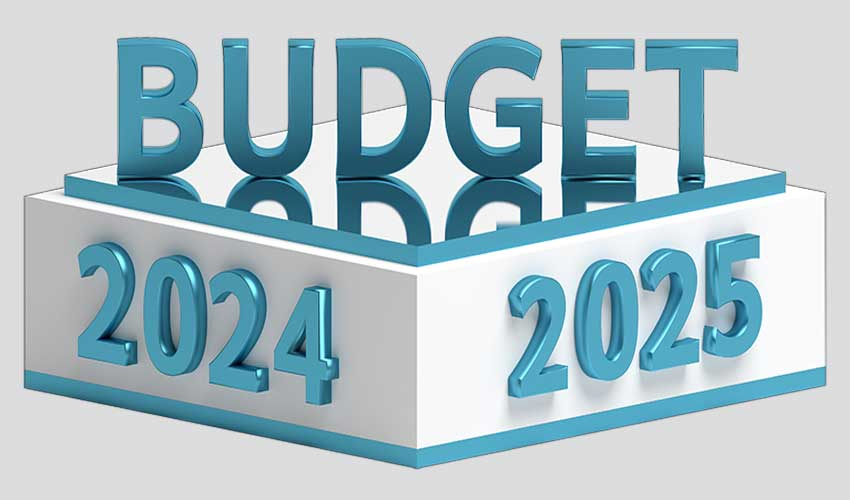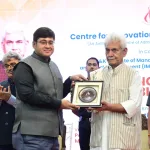INTERM BUDGET
The Budget 2024-25, unveiled by the Indian government under the stewardship of Prime Minister Narendra Modi, heralds a transformative epoch aimed at inclusive growth, economic resilience, and sustainable development. This budget, a testament to the government’s unwavering commitment to “Viksit Bharat,” delineates an ambitious roadmap to confront the multifaceted challenges and capitalize on the burgeoning opportunities. The ensuing analysis meticulously dissects the salient highlights and strategic initiatives of the budget, underscoring its potential impact across diverse sectors and demographics.
The budget opens with a profound acknowledgment of the overwhelming trust reposed in the government by the citizenry of India, as evidenced by the historic re-election of the administration for a third term. This renewed mandate signifies a collective aspiration for a more robust, prosperous India. The budget manifests this aspiration, aiming to deliver on the promises made to the electorate and lay the groundwork for an era of unprecedented development.
Globally, while the economy performs better than anticipated, it remains ensnared by policy uncertainties, elevated asset prices, political volatility, and supply chain disruptions. Despite these global headwinds, India’s economic growth stands as a beacon of stability, with inflation rates gravitating towards the 4% target. The budget underscores India’s resilience and its trajectory as a formidable economy amidst global turbulence. This resilience is bolstered by strategic fiscal policies, prudent economic stewardship, and a robust framework for macroeconomic stability.
In the interim budget, the government underscored its commitment to the marginalized, namely the poor (Garib), women (Mahila), youth (Yuva), and farmers (Anndata). This full-year budget fortifies that commitment, with a particular focus on employment, skilling, MSMEs, and the middle class. A comprehensive package of five schemes is introduced, aimed at creating employment opportunities and fostering skill development for 4.1 crore youth over five years, with a central outlay of ₹2 lakh crore. This substantial investment is poised to equip the youth with the requisite skills and opportunities to contribute to the nation’s growth and development.
The budget articulates nine strategic priorities designed to generate ample opportunities and propel the nation towards holistic prosperity. The government plans to undertake a comprehensive review of agricultural research to boost productivity and develop climate-resilient crops. Initiatives include the release of high-yielding and climate-resilient varieties, promotion of natural farming among 1 crore farmers, and the establishment of bio-input resource centers. This focus on agricultural innovation and sustainability aims at ensuring food security, augmenting farmers’ income, and promoting environmentally benign farming practices.
Three employment-linked incentive schemes are introduced to support first-time employees and their employers. Additionally, a new centrally sponsored scheme aims to skill 20 lakh youth over five years, with a substantial investment in upgrading industrial training institutes. These initiatives are designed to address the dual challenges of unemployment and skill mismatches, thereby enhancing the employability of the youth and meeting the exigencies of a rapidly evolving job market. The government adopts a saturation approach to ensure comprehensive development, focusing on education, health, and economic empowerment of marginalized communities. Specific initiatives include the PM Vishwakarma Scheme, Stand-Up India, and targeted development plans for the eastern region of the country. By prioritizing inclusivity and social justice, the budget aims to bridge the development gap and ensure equitable growth across all segments of society.
The budget provides special attention to MSMEs and labour-intensive manufacturing sectors. Measures include a credit guarantee scheme, a new assessment model for MSME credit, and enhanced Mudra loan limits. Furthermore, the budget outlines support for food irradiation units, e-commerce export hubs, and the establishment of industrial parks and rental housing for industrial workers. These measures aim at bolstering industrial growth, enhancing competitiveness, and creating a conducive environment for businesses to flourish. The government plans to develop cities as growth hubs through economic and transit planning. Creative redevelopment of existing cities, transit-oriented development plans, and significant investments in urban housing are key components of this initiative. By focusing on urban infrastructure and planning, the budget aims to transform cities into engines of economic growth and centers of innovation and productivity.
The budget allocates funds for energy security projects, including renewable energy initiatives and infrastructure development. Emphasis is placed on enhancing the energy grid’s resilience and expanding access to clean energy sources. By investing in renewable energy and energy infrastructure, the budget aims to ensure a sustainable and reliable energy supply, reduce carbon emissions, and enhance energy security. Significant investments are planned for developing critical infrastructure such as roads, railways, ports, and airports. These projects aim to improve connectivity, enhance logistics, and support economic growth across the country. By developing world-class infrastructure, the budget seeks to facilitate seamless movement of goods and people, reduce transportation costs, and stimulate economic activities.
The budget promotes innovation through increased funding for research and development in key sectors. The government aims to foster a culture of scientific inquiry and technological advancement to drive economic progress. By supporting innovation and research, the budget aims to position India as a global leader in technology and innovation, driving long-term economic growth and competitiveness. Comprehensive reforms are envisioned to streamline governance, improve regulatory frameworks, and enhance the ease of doing business. These reforms are aimed at fostering a conducive environment for entrepreneurship and investment. By implementing next-generation reforms, the budget seeks to create a business-friendly milieu, attract investments, and drive economic growth.
The Budget 2024-25, with its multifaceted and ambitious initiatives, sets the stage for a transformative era in India’s development journey. The strategic focus on agriculture, employment, skilling, MSMEs, urban development, energy security, infrastructure, innovation, and governance reforms underscores the government’s commitment to inclusive and sustainable growth. By addressing the diverse needs and aspirations of its citizens, the budget aims to propel India towards a prosperous and resilient future.
In summation, this budget is not merely a financial statement but a clarion call to action. It is an emphatic testament to the adage, “Fortune favors the bold.” By embracing visionary initiatives and fostering an environment of innovation and inclusivity, the government is charting a course towards a prosperous and resilient India. This is a budget that speaks to the heart of a nation, steadfast in its pursuit of greatness, undeterred by adversity, and united in its quest for a “Viksit Bharat.”
( Author is Advocate, Supreme Court of India. Feedback:[email protected])








